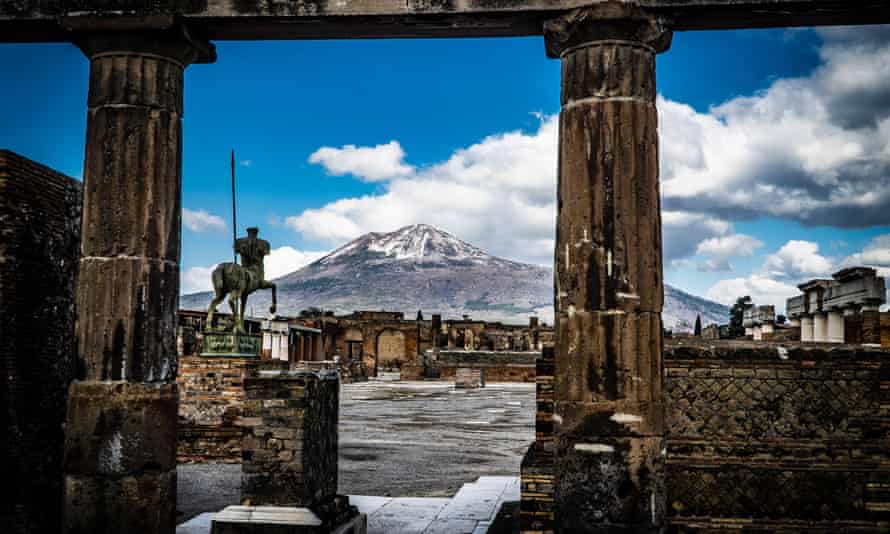Cloud of ash and gas engulfed Roman city within minutes and suffocated inhabitants, research says

A giant cloud of ash and gases released by Vesuvius in 79 AD took about 15 minutes to kill the inhabitants of Pompeii, research suggests.
The estimated 2,000 people who died in the ancient Roman city when they could not escape were not overwhelmed by the lava, but rather asphyxiated by the gases and ashes and later covered in volcanic debris to leave a mark of their physical presence millennia later.
The study by researchers from the Department of Earth and Geo-environmental Sciences of the University of Bari, in collaboration with the National Institute of Geophysics and Volcanology (INGV) and the British Geological Survey in Edinburgh, has revealed the duration of the so-called pyroclastic flow, a dense, fast-moving flow of solidified lava pieces, volcanic ash and hot gases that hit the ancient Roman city minutes after the volcano erupted.
The lethal cloud had “a temperature of over 100 degrees and was composed of CO2, chlorides, particles of incandescent ash and volcanic glass”, said Roberto Isaia, senior researcher of the Vesuvius Observatory of the INGV. “The aim of the work was to develop a model to try to understand and quantify the impact of pyroclastic flows on the inhabited area of Pompeii, about 10km [6 miles] from Vesuvius,” he added.
The study confirms that the inhabitants had no escape, and most of those who died suffocated in their homes and beds, or in the streets and squares of the city. Isaia’s model estimates the gases, ash and volcanic particles would have engulfed the city for between 10 and 20 minutes.
“It is probable that dozens of people died due to the rain of lapilli that fell on Pompeii after the eruption, but most of them died of asphyxiation,” Isaia said, adding the pyroclastic flow would have reached Pompeii a few minutes after the explosion.
“Those 15 minutes inside that infernal cloud must have been interminable. The inhabitants could not have imagined what was happening. The Pompeiians lived with earthquakes, but not with eruptions, so they were taken by surprise and swept away by that incandescent cloud of ash.”

The INGV research described pyroclastic flows as “the most devastating impact” of explosive eruptions. “Comparable to avalanches, they are generated by the collapse of the eruptive column. The resulting volcanic ashes run along the slopes of the volcano at speeds of hundreds of kilometres per hour, at high temperatures and with a high concentration of particles.”
Today, the ruins of Pompeii are Italy’s second-most visited archaeological site, after the Colosseum in Rome and, last year, attracted about a million tourists.
“It is very important to be able to reconstruct what happened during Vesuvius’s past eruptions, starting from the geological record, in order to trace the characteristics of the pyroclastic currents and the impact on population,” said Prof Pierfrancesco Dellino of the University of Bari.
“The adopted scientific approach in this study reveals information that is contained in the pyroclastic deposits and that clarifies new aspects of the eruption of Pompeii and provides valuable insights for interpreting the behaviour of Vesuvius, also in terms of civil protection.”

















